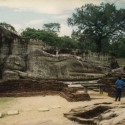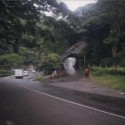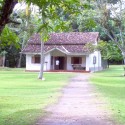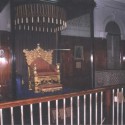A brief cultural tour of Sri Lanka – and what to see, where
Apr 14th, 2012 | By Merrick Peiris | Category: EnvironmentSri Lankan cultural development through the ages can be seen as a product of a combination of adoption, innovation, development and preservation. Since around 300b.c, our people adopted and innovated methods to develop systems through governance, irrigation, agriculture, art, language and religion.
Whilst we can identify through various historic references to many aspects of other nations in relation to our culture, what we have today is still a unique cultural heritage. What is referred to as culture is the combination of aspects including religious beliefs, language, history, governance, occupations, environment, foreign influence, trade and economics among others that have influenced the defining characteristics of its people.
Sri Lanka remains even today as a unique country due to its peoples’ ability to be open and innovative.
Going back to its roots, beginning with the two main languages spoken in Sri Lanka, Singhala and Tamil, whilst its origins can be traced to Prakrit and Dravidian, the Singhala language is unique to Sri Lanka and is only spoken by Sri Lankan people. Its written alphabet with a character set numbering 1081 is derived from the Sanscrit Alphabet, but its relationship almost unrecognizable with its origins. Yet, anyone who understands Hindi could recognize and understand its meanings when spoken.
The close relationship between Buddism and Hinduism still remains, although the doctrines of Buddhism followed in Sri Lanka widely differs from that followed in North India.
A case in point is the representation of the moon-stone (Sandakadapahana) where this artistic representation of Buddhism differs only at the centre. The outer ring shown in groups of three petals represents the fires of life, and the second ring represents the truths of life, namely births, illness, suffering and death, repeated through rebirth. The third layer represents the knotted wines representing internal and external conflicts, the forth depicting a row of swans represents discernment between good and bad or right and wrong. Whilst these rings are common to Buddhism in both countries, the centre represents Nirwana, or nothingness in Sri Lanka, it represents “being one with God” in belief by the North Indian Buddhist.
Religions, especially Buddhism has a deep influence in the habits and culture of the people in taking a rather fatalistic approach. Poverty, suffering are accepted in its stride. However, while many in Sri Lanka follow astrological charts, it has no connection with Buddhist doctrine.
The Sinhala and Tamil New year is celebrated together on the 13the and 14 of March according to the lunar Calendar.
What to see where
Yapahuwa -Entrance to the rock castle, Sigiriya Rock castle, Man made reservoirs – Anuradhapura , Paintings on the rock surface, Stupa in Pollonaruwa, Stupa – under restoration, Royal Baths – Anuradhapura
Tea grown in hill country – Nuwaraeliya, Throne of the last king – Colombo museum, Rock carving – Polonnaruwa , Ancient hospital (ruins) , Carvings on rock – Polonnaruwa, Stupa on rock hill – Mihintale, Sacred Buddhist Temple – Kandy














































 Users Today : 29
Users Today : 29 This Month : 70
This Month : 70 Total Users : 19077
Total Users : 19077 Views Today : 39
Views Today : 39 Total views : 160704
Total views : 160704 Who's Online : 2
Who's Online : 2